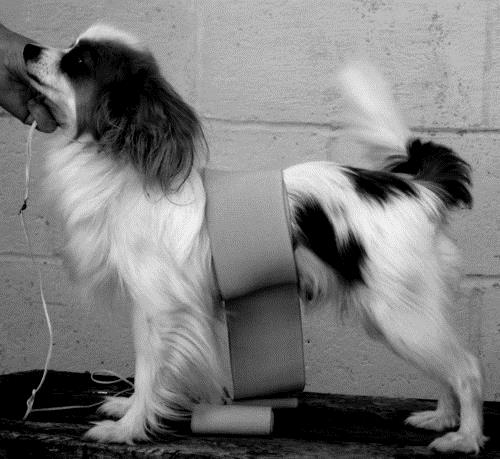
THE FEAR WRAP
Wrapping a pet allows the dog/cat to calm itself and learn to ignore the stresses that trigger an unwanted behavior. It will increase balance, self-confidence, focus, trainability, socialization, relaxation and overall awareness. The benefit is that it will relieve shyness, aggression, destructive behavior, car sickness, fear of loud noises, and touch sensitivity.
The wrap completely covers the sensory receptors that send information to the brain and central nervous system. Once the brain receives the information, the animal has a sense of well-being and will calm itself. A similar procedure is used on children with autism.
The wrap may work immediately on your pet, or it may take several wrappings before the pet changes his behavior. Most pets will not resist wearing the wrap, but the effects of the wrap are not dependent upon this.
You should put on the wrap before any situation where your pet exhibits fear or aggression. That would be before a thunderstorm, before training, before a ride in the car, before company comes, etc. You can also gently stroke the stop of your pet’s head and ears in small circular motions, but refrain from speaking to your pet. When your pet is fearful, the worst thing you can do is speak to him in a soothing voice because your pet will interpret this tone of voice as “praise” and you will therefore reinforce the fear. Your body language and attitude must be that nothing out of the ordinary is going on. Let the pet work through the fear on his own.
Do not leave the wrap on at all times. It is a re-training tool. It should only be worn when de-sensitizing or in training sessions.


Wrapping Procedure You will need a simple “Ace Bandage” for the wrap. For small pets, use a 2” ace bandage. For large pets, use a 4” bandage. You may fasten the ace bandage with safety pins. With your pet standing, begin by putting the end of the bandage on his shoulders and go down, underneath and back up the body. The wrap will ride just behind the front legs. Bring the bandage down the side and pin it just above the elbows. Then change directions and wrap the front of the chest. Secure the end of the bandage at the opposite elbow. The ace bandage should be snug, but not tight. To use up the excess bandage, you can either re-wrap, following the same pattern, or just or cut it off.